Bathroom skirting boards: tips for choosing and installation rules
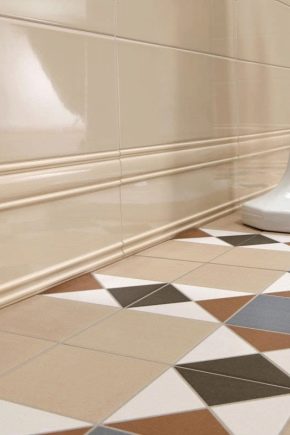
The skirting board is a necessary decorative element that hides the gaps between the wall and the floor, thus forming a line of transition from one surface to another. Bathroom skirting boards should not only play a decorative role, but also meet the requirements of practicality. In unfavorable operating conditions, the material must be protected from water penetration. Tips for choosing and installing skirting boards will be discussed in more detail in this article.
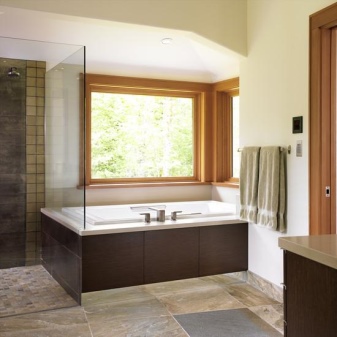

What is a bathroom skirting board for?
Floor skirting boards are not used in all rooms. When the finishing of the wall and floor is made with high quality and without gaps at the joints, it is quite possible to do without this decorative element. But in the case of the bathroom, this approach would be wrong.
Temperature drops, high humidity and an abundance of water in bathrooms create unfavorable conditions for the operation of any coatings. The plinth in such rooms is not only an aesthetic addition to the interior, but also protects the gaps and crevices between the floor and the wall from moisture penetration.
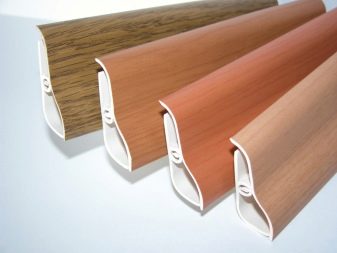
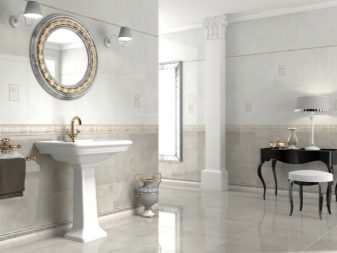
Water seeping into crevices contributes to the formation and spread of mold and mildew, which can lead to deterioration of the finish in the room. In addition, dampness in the bathroom will only contribute to the spread of insects that like moisture (for example, centipedes and wood lice). Also, unsealed joints will accumulate dirt over time, which will not have the best effect on the appearance of the bathroom.
Basic material requirements
Temperature and humidity conditions in bathrooms have their own distinctive features. Regular water treatments, as well as washing and drying clothes, significantly affect the level of humidity. In the absence of good ventilation, the microclimate in the room will most of the time be unfavorable, which may not in the best way affect the condition of the finishing materials. For this reason, special requirements are imposed on skirting boards in the bathroom.
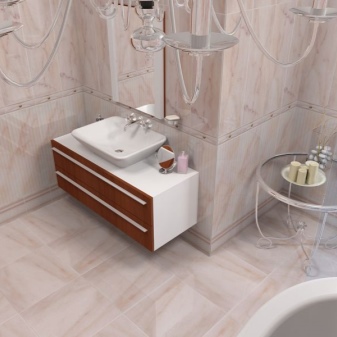
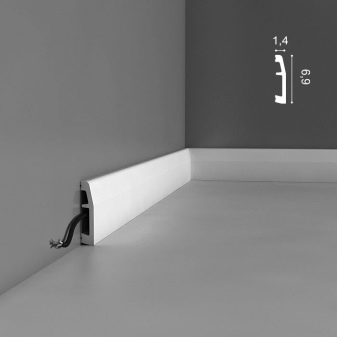
The plinth must have the following qualities:
- The product must have a high level of water resistance.
- Resistant to temperature extremes. The material should not deform due to unfavorable temperature and humidity conditions of operation.
- High indicators of strength and resistance to mechanical stress are no less important.
- Chemical inertness. Bathrooms need regular cleaning in order to avoid the appearance and spread of harmful microorganisms. The plinth in such a room must be resistant to various household chemicals.
- Material resistance to corrosion and decay is required.
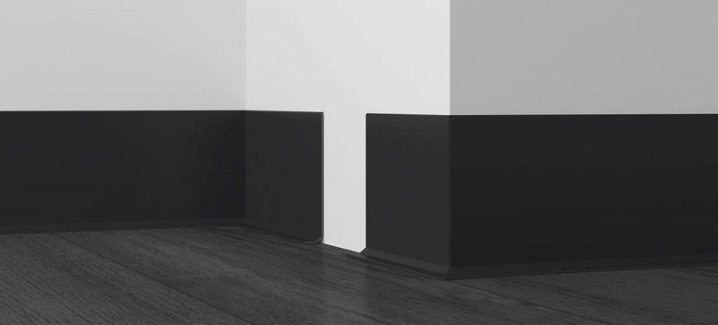
Views
All bathroom skirting boards differ in material and appearance. Each type of product has its own advantages and disadvantages, which must be considered when choosing the appropriate option. Let's dwell on each type of material in more detail.
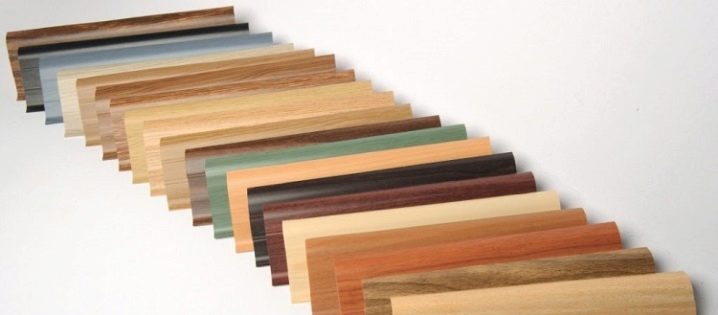
Ceramic
A ceramic skirting board is ideal for a tiled room. The cost of such products is quite high, which is justified by the high technical characteristics of the material.
The manufacturing process for ceramic skirting boards is practically the same as for the production of tiles.High quality clay is pressed, glazed and baked at high temperature.
The main advantages of ceramic skirting boards are highlighted:
- high level of moisture resistance;
- resistance to fungi and mold;
- resistance to dirt and ease of care;
- lack of deformation in conditions of unfavorable microclimate in the room;
- high indicators of hardness and strength;
- aesthetic appearance;
- long service life, which can be more than 15 years without losing the original appearance and properties;
- environmental friendliness.
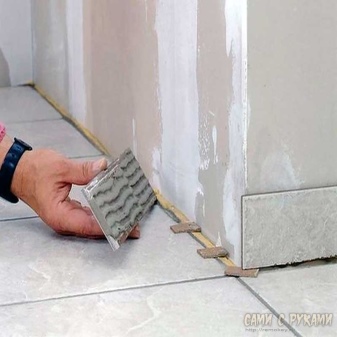
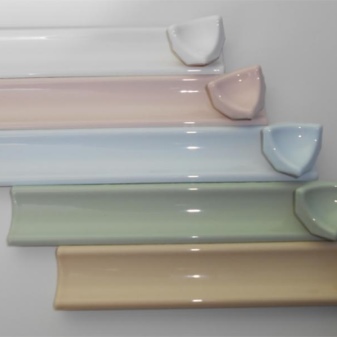
However, ceramic skirting boards also have some disadvantages. The few disadvantages include:
- high cost;
- brittleness (despite the fact that ceramics is a hard material, with a point mechanical action, the coating may crack or crack).
The ceramic skirting board is attached to tile adhesive. Installation of such a product is more laborious than fixing plastic skirting boards.

Plastic
Plastic skirting boards are made of polyvinyl chloride. This type of product is quite popular, as it combines good quality and low price.
PVC floor skirting boards are of several types:
- for linoleum and carpet coverings;
- versatile models that combine well with all materials.
Many models of PVC skirting boards have rubberized edges. This option is most preferable for use in bathrooms, since such a product will most closely adhere to the surfaces of the floor and walls.
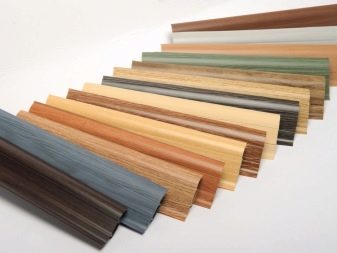
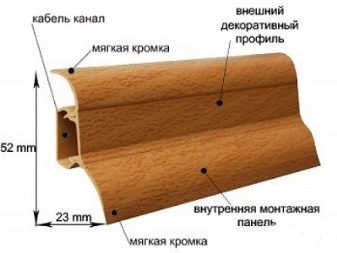
Floor decorative elements based on polyvinyl chloride have a number of advantages.
The main advantages of such skirting boards:
- ease of fastening;
- low cost;
- moisture resistance;
- good indicators of elasticity;
- resistance to the effects of household chemicals;
- resistance to fungi and mold;
- not susceptible to decay;
- a wide range of products in various shades.

Do not forget about some of the disadvantages of PVC products.
Among the minuses, the following nuances can be noted:
- Products in white and other light colors turn yellow over time.
- When installing the skirting board, it is necessary to use special plugs and corners, which does not affect the appearance of the finish in the best way. Even if the fasteners are perfectly matched in color, their presence will still be noticeable.
- The material is not highly durable.
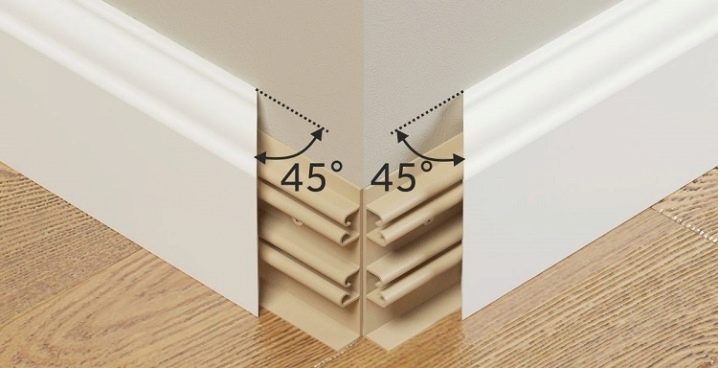
Polyurethane
Polyurethane skirting boards have rather high technical characteristics, which makes it possible to use them in rooms with unfavorable operating conditions.
The advantages of such products include:
- Long service life. The material does not lose its properties and appearance for 30 years.
- Resistant to moisture.
- The material does not absorb unpleasant odors.
- It is resistant to high and low temperatures.
- Ease of installation. Due to the flexibility and plasticity of the material, the skirting board is quite easy to attach, even in the case of uneven walls and floors. In addition, special tools are not required to cut products - all work can be carried out using an ordinary knife.
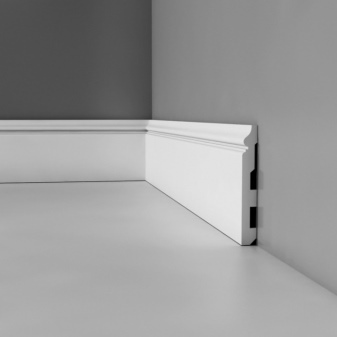
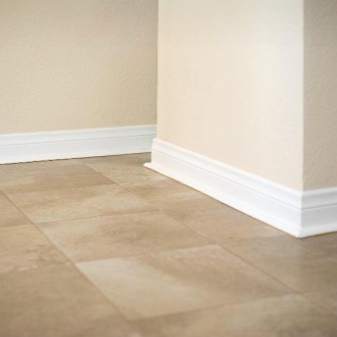
- The skirting board is easy to clean.
- The products are resistant to chemicals.
- A wide range of products of various shapes and textures allows you to choose the right option for any interior. Polyurethane can also be painted over with almost any kind of paints and varnishes.
Despite a number of significant advantages, polyurethane skirting boards are rarely used in bathrooms, since the product is not able to provide an adequate level of tightness. Another disadvantage of this material is the high probability of the appearance of dents on the surface as a result of mechanical stress.
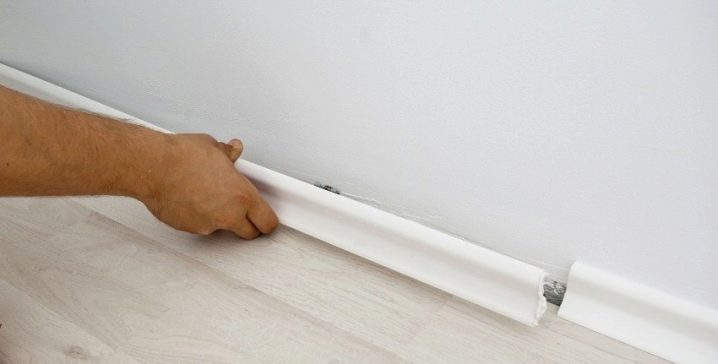
Metallic
Metal skirting boards are made of aluminum.Due to their high quality and excellent performance characteristics, such products can be used in rooms with high humidity.
The aluminum skirting board has the following advantages:
- corrosion resistance;
- wear resistance;
- heat resistance;
- ease of attachment to glue or using special fasteners;
- attractive appearance;
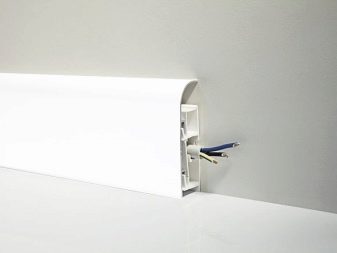
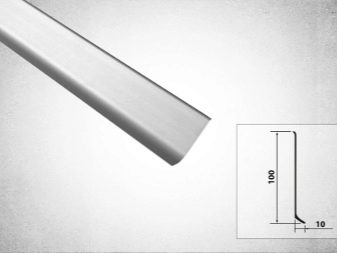
- high strength (the skirting board will not break or crumple even from heavy loads on the surface);
- resistance to most types of household chemicals;
- waterproofness;
- good flexibility (the product can be used for finishing complex surfaces).
It should be noted that the cost of metal strips is quite high. Another disadvantage of such products is some of the care features. The material may lose its original appearance from exposure to some products containing acids and abrasive particles: the surface will become darker. Soapy water or toothpaste will help correct such a defect.
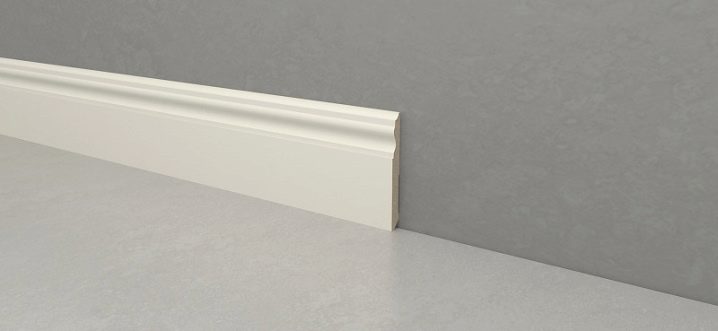
Natural stone
For the manufacture of skirting boards, natural stones such as marble and granite are most often used. Planks made from natural materials are distinguished by their sophistication. In addition, the technical characteristics of marble and granite skirting boards are many times superior to similar products made from other materials. Natural stone has a high level of strength and durability. During production, marble products are coated with a special moisture-repellent compound, which does not allow water to penetrate into the structure of the material. Granite slats are resistant to chemicals and not subject to deformation from moisture and temperature extremes.
The disadvantage of natural stone products is, first of all, the high cost. However, for a small-sized bathtub, the cost of finishing material will not be so large. Another disadvantage of the product is some installation difficulties. To work with natural material, you will need special devices that allow you to cut the skirting board without damaging it.
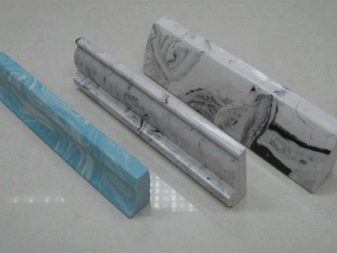
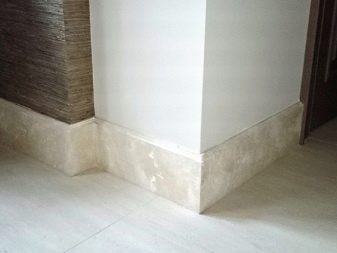
Self-adhesive
A separate type of floor skirting boards include self-adhesive PVC models. This model is an elastic flexible tape, on the back of which an adhesive layer is already applied. Installation of such a product is very simple and does not require much effort, time and cost for additional fasteners or glue. Self-adhesive skirting board protects joints well from water and dirt penetration. The disadvantage of this material is its short service life.
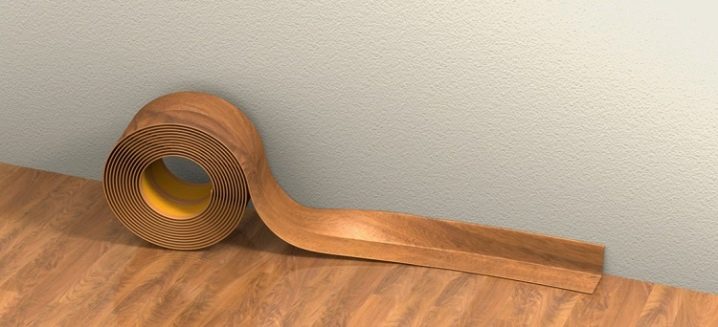
How to choose?
When choosing a floor plinth, the first thing to consider is the color of the bathroom floor. To create a smooth transition from floor to wall, you need to use planks in the same color as the flooring. To make the transition line clearer, it is necessary to use contrasting shades or at least differing by several tones. When choosing a suitable color, you can also focus on the tone of the walls.
Many designers are of the opinion that floor planks should not differ much in color from the floor and walls. It is recommended to create a smooth transition from one surface to another using a skirting board of a similar shade. By using skirting boards of certain colors, you can visually change the size of the room. To visually increase the height of the ceiling, it is necessary to use strips to match the walls. To make the area of the bathroom visually larger, plinths are installed in the color of the floor.
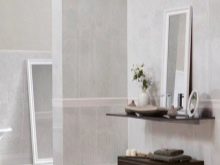
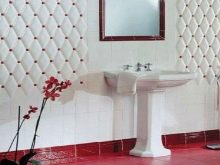
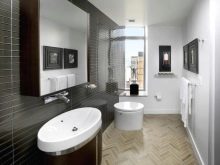
When choosing a floor plinth, it is important to consider not only its material, color and design, but also its height.
To select a product of a suitable parameter, it is necessary to take into account such indicators as:
- room area;
- ceiling height;
- the shape of the room;
- predominant colors in the interior.
In large rooms, the most suitable option would be massive and high types of skirting boards. In a small room, simpler flat models of planks will look better.
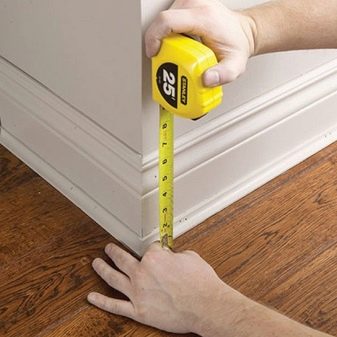
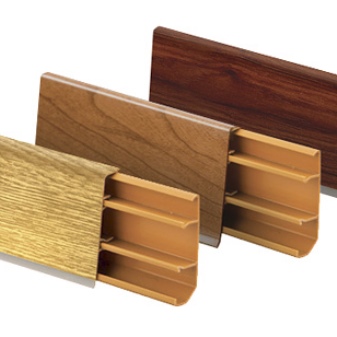
Mounting
Putting the baseboard on the floor is not difficult at all. The strips are attached mainly with glue or with fasteners. The process of fixing the plinth largely depends on what material it was made of.
Regardless of the type of product, the surface must be well cleaned and degreased before finishing work. It is also worth remembering that the substrate must be not only clean but also dry. For most types of skirting boards, special glue is used.
Ceramic strips are fixed with tile adhesive. Silicone sealant can also be used, but this will not provide a secure bond. Before you start fixing the curb, the plinth must be measured and cut. Cutting is carried out using an angle grinder with a diamond disc. To form joints in the corners of the room, the edges of the corner borders must be filed at an angle of 45 degrees.

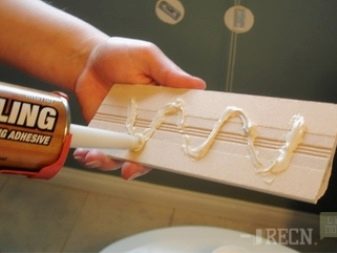
The installation of the skirting board must be started from a visible corner. You need to move exactly to the middle of the room, and then go to the opposite corner. After installing the ceramic border, the joints must be treated with an antiseptic grout.
Installation of skirting boards made of other materials has a similar principle. The only difference is the tools and fasteners used. For the installation of metal models, special fasteners are produced (clips and strips). Aluminum products can also be attached to liquid nails.
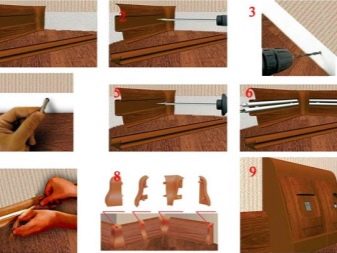
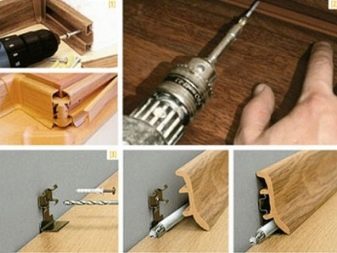
A feature in working with polyurethane strips is the ease of cutting the material. To obtain the segments of the required length, you do not need to use a grinder - all the work can be done with a clerical knife. Such skirting boards are fastened with a special adhesive that does not contain solvents.
For a more reliable fastening of plastic models, it is recommended to use dowels and screws. This method of installation is more laborious, but it is of better quality than fixing with glue. Joints and corners are masked using special plugs to match the material, which usually come with skirting boards.
For information on how to join the skirting boards, see the next video.













The comment was sent successfully.